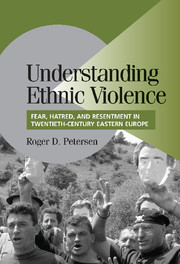Part Two - Comparisons: The Baltic States in the Twentieth Century
Published online by Cambridge University Press: 05 June 2012
Summary
The histories of Lithuania, Latvia, and Estonia contain all of the elements necessary for a study of Fear, Hatred, Resentment, and Rage. In the course of the twentieth century this region witnessed the slow structural change of modernization, rapid changes created by numerous wars and occupations, reorderings and reversals of ethnic hierarchies, and changing power balances among ethnic groups. This section contains three historical chapters: (1) Chapter 5: “1905”; (2) Chapter 6: “In the Wake of Barbarossa”; and (3) Chapter 7: “The Reconstruction of Independent States.” Proceeding chronologically across the entire twentieth century, these chapters cover, to varying extents, the entire periodization outlined in the Introduction. The section as a whole aims to assess and compare the explanatory and descriptive abilities of the four emotions. The fifth chapter provides historical background while addressing the 1905 failed Russian Revolution. The sixth and seventh chapters address specific puzzles regarding variation in ethnic targets and nature of violent action. These three chapters are used to assess the “fit” of the Fear, Hatred, Resentment, and Rage narratives, that is, how well each can explain important enigmas in target patterns and general processes within a given period. A summary chapter, Chapter 8, assesses the “fit” of each emotion across time and draws some general conclusions.
- Type
- Chapter
- Information
- Understanding Ethnic ViolenceFear, Hatred, and Resentment in Twentieth-Century Eastern Europe, pp. 85 - 86Publisher: Cambridge University PressPrint publication year: 2002



